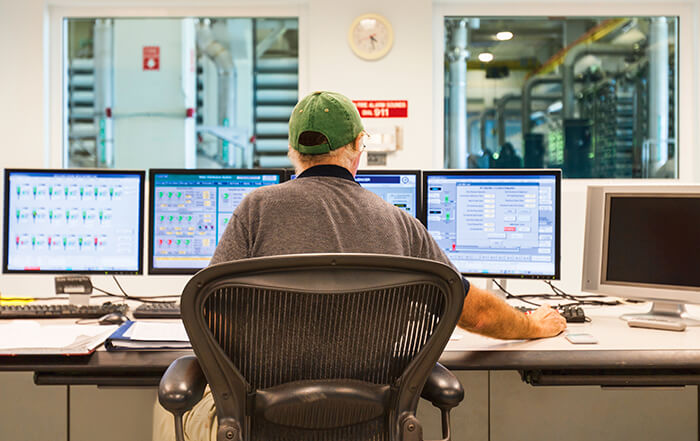With the advent of route-based vibration analyzers, protection systems and online condition monitoring, there have been significant strides the last few years in condition monitoring—the process of collecting systematic data to identify changes in a system’s performance.
Supported by the industrial internet of things (IIoT), smart interconnected sensors and diagnostics track vibration, temperature, pressure and other variables across equipment and operations. The sensors detect issues, schedule service maintenance and prevent outages and downtime.
If the measured parameters are well selected and analyzed, condition monitoring can be vital for maintenance and regulatory planning purposes. Yet, does condition monitoring go far enough? Is there a danger in being too reactive in the way we adjust and fine tune our engineering processes? Here is a look at the monitoring and maintenance issues around Coriolis flow meters, stressing the need for condition monitoring to be supported by proactive diagnostics and meter verification.
 Image 1. Diagnostics interface including actionable information on alerts. (Image courtesy of Emerson Automation Solutions)
Image 1. Diagnostics interface including actionable information on alerts. (Image courtesy of Emerson Automation Solutions)Maintenance & Regulatory Requirements
Coriolis flow meters are continuing to grow in use in process plants and across the oil and gas industry. Based on the principles of motion mechanics, Coriolis meters measure mass flow rates, density and volume flow.
To date, Coriolis meters have been highly effective in generating accurate measurements in demanding process conditions, such as abrasive slurries or corrosive chemicals. With their lack of mechanical moving parts, no straight pipe runs are required for flow conditioning and nonintrusive design ensures reliability.
Yet, Coriolis meters can be vulnerable. In instances such as moisture-causing electrical issues, corrosion, over-pressurization, freezing or coating, or unexpected changes in concentrations or temperature, there is little option but to remove meters and halt production for further inspection. In addition, there is also a need for periodic maintenance checks to ensure safety standards, International Organization for Standardization (ISO) 9001 compliance and correct regulatory reporting.
The need to adhere to these regulations while maintaining efficient processes can be a major issue for process operators, maintenance and compliance managers as they continually have to verify meters that are often already working perfectly.
Such verification and other maintenance activities often require removing the meters from the process loop and transporting them to laboratories for maintenance, verification or calibration, leading to considerable costs and downtime and negatively impacting plant operations. According to industry analysts ARC Advisory Group, the average impact of unplanned downtime in the process industries alone is $20 billion, or almost 5 percent of annual production. (1)
Furthermore, while today’s process facilities are embedded with alerts and reactive diagnostics that provide the first step to preempting potential production interruptions, too often flow meters lack real-time intelligence and proactive, predictive diagnostics capabilities.
Elements of Proactive Diagnostics
For these reasons, it is important for traditional condition monitoring solutions to be supported by proactive diagnostics.
What does proactive diagnostics consist of?
First, any form of proactive diagnostics should have minimal impact on ongoing operations, providing in situ calibration verification of Coriolis meters on-demand and without impact on process or meter outputs. Only then, if significant issues are identified, will the meters be pulled, cleaned, recalibrated if necessary, and then reinstalled.
Take the example of tube stiffness, something that must be constant in Coriolis meters in order not to influence measurement. Each meter has a unique stiffness value and if a change of tube thickness takes place in the field, the meter will likely require recalibration.
To this end, the latest proactive diagnostics innovations can detect any changes in tube stiffness—due to corrosion, for example—almost immediately, first by characterizing the frequency response function curve and then by driving the meter at five different frequencies to define the curve and its three main elements: mass, dampening and stiffness.
All this can take place while the meter is in situ.
Second, proactive diagnostics and meter verification need to generate real-time, decision-making intelligence and flow measurement confidence immediately and to the highest levels of accuracy.
Whereas traditional diagnostics and condition monitoring often provide just an entry point to further analysis, proactive diagnostics provide complete measurement confidence through innovative algorithms and diagnostics.
Third, in order to align with companies’ IIoT strategies, proactive diagnostics and smart meter verification need to be able to access multiple data points, providing users with a complete process overview. Multiphase and flow diagnostics, for example, can provide immediate alerts on process upsets, such as aeration or when low flow rates may be affecting measurements, and can also alert engineers to improper meter sizing.
There is also a need for greater intelligence to be built into the meter at a local level—in essence getting the meter to think for itself. Take coating, a significant challenge to meter performance and accuracy. With proactive diagnostics, meters and their verification systems can detect the first signs of coating before a proving and then trigger hot oil or cleaning cycles immediately rather than going via additional process loops, such as distributed control systems.
Finally, any proactive diagnostics must provide clear and transparent verification audit trails to meet compliance requirements. Today, an increasing number of international standards and third-party agencies recognize verification technologies as a way to confirm the ongoing accuracy and effectiveness of Coriolis meters.
Improved Operational Certainty, Productivity & IloT
To meet regulatory and maintenance requirements while at the same time increasing efficiencies, it is vital that traditional condition monitoring solutions work hand-in-hand with the latest proactive diagnostics innovations. The result will be improved operational reliability and productivity, and the ability to implement accelerated IIoT strategies across plant operations.
References
1. Resnick, Craig. “Reducing Unplanned Downtime and Helping Future-proof Automation System Assets.” IDC, August 2016.


